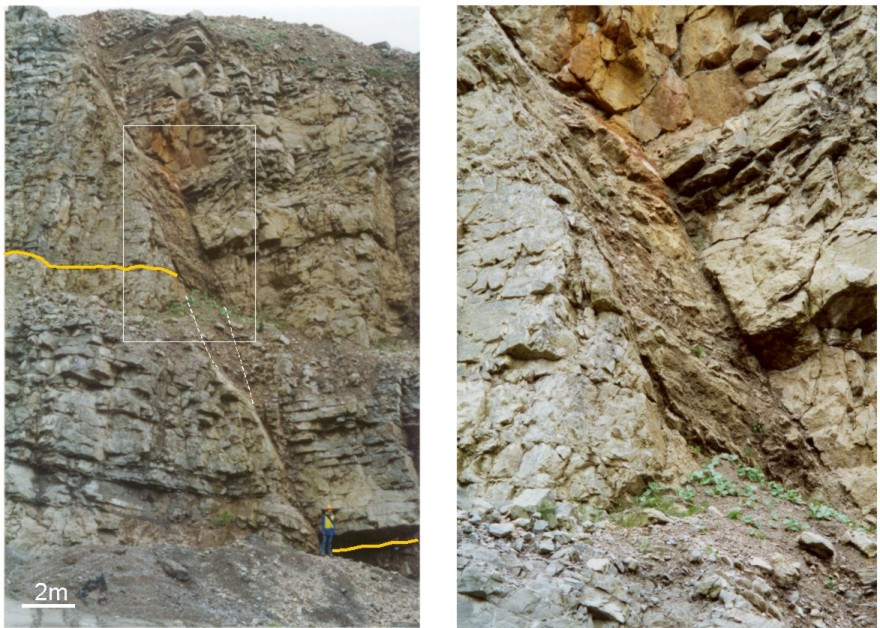

Fault lens within 15m displacement normal fault, Graig Quarry, North Wales. The lens is strongly deformed, with rotation of bedding towards the hangingwall of the fault.
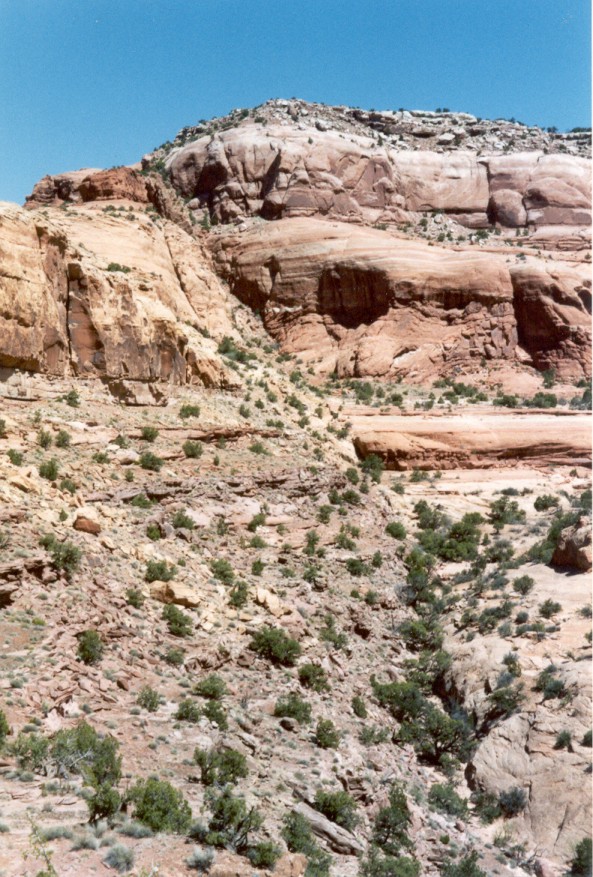
The most common departure from a single fault surface is a paired fault surface, in which two surfaces enclose variably deformed host rock. This example, from Bridger Jack near Moab, is of a 150m normal fault showing a lens geometry with most displacement on the hangingwall fault. Interpreted enlargement of this photograph is shown in the next photograph.
Towards the branch points of the faults, the lens becomes progressively more deformed (see photo below).
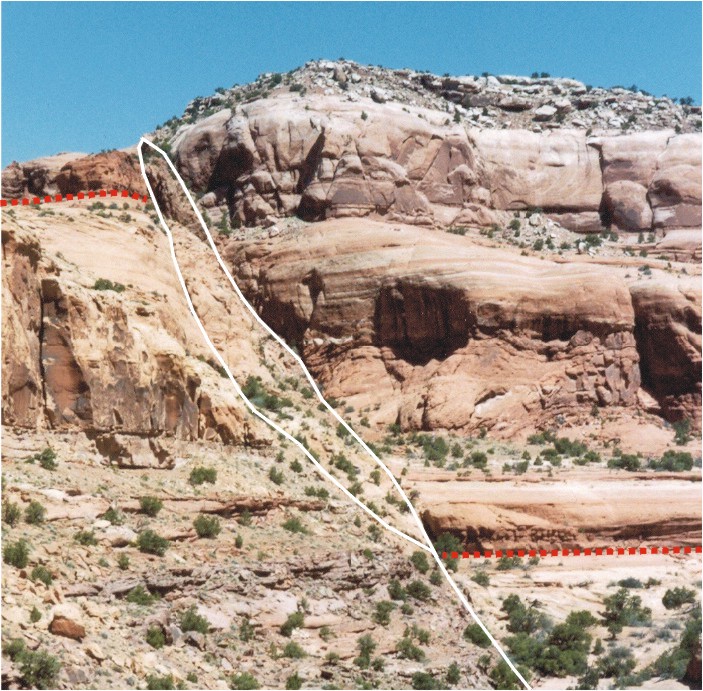
The most common departure from a single fault surface is a paired fault surface, in which two surfaces enclose variably deformed host rock. This example, from Bridger Jack near Moab, is of a 150m normal fault showing a lens geometry with most displacement on the hangingwall fault. The offset base of the Dewey Member and the bourndary to the lens is shown. Towards the branch points of the faults, the lens becomes progressively more deformed (see photo below).
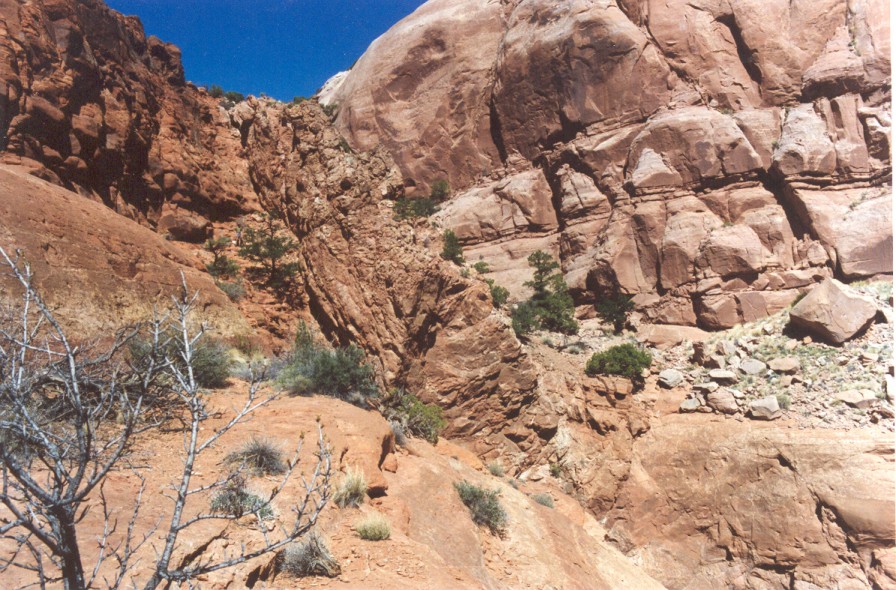
Deformed lens towards the upper branchpoint of the Bridger Jack fault near Moab (see photographs above).
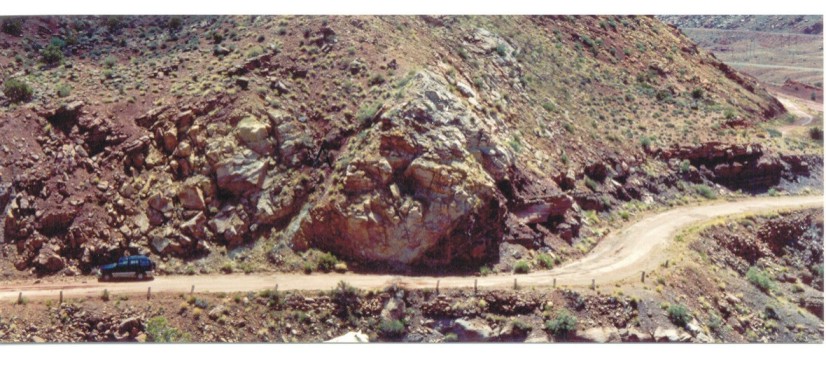
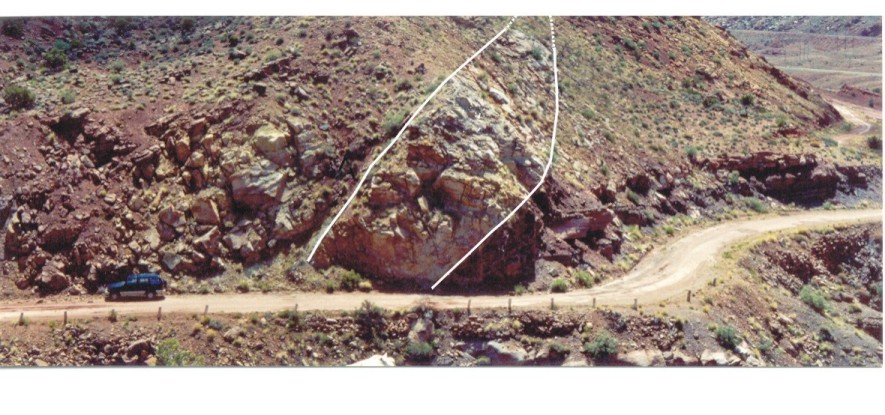
Moab fault at 191 Canyon, just north of Moab. At this point the Moab Fault has a ca 900m downthrow to the left. The fault zone comprises footwall derived fault rock and hangingwall derived fault rock, separated by a lens of Entrada sandstone; part of the intervening sequence between the hangingwall Salt Wash Formation and the footwall Cutler Formation. The lens is discontinuous (e.g. it decrease to zero just beyond the top of this photo and is not seen on the near side of the canyon) and is locally thoroughly deformed by granulation seams. Further details of the Moab Fault zone are provided in Foxford et al. (1999), who suggest that this type of lens may be a relay that has become entirely enclosed by breaching faults.